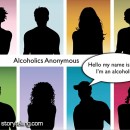
We’ve taken the reins on disease prevention and patient compliance. Now, researchers have confirmed the optimal strategy for changing health-related behavior: The use of narrative. That’s what we’ve been doing for 25 years — only we call it Emotive Storytelling because we’ve loaded it with much more than narration. We’ve harnessed stories with video, scenarios, images, emotions, animation, interactivity and action to elevate health education to new horizons.
Leslie J. Hinyard and Matthew W. Kreuter did a review on narrative communication that ran in a 2006 issue of Health Education & Behavior. The article (Using Narrative Communication as a Tool for Health Behavior Change: A Conceptual, Theoretical, and Empirical Overview) laid out the active components of narrative communication and explanations for its effectiveness. The authors discussed health communications and the inadequacy of the dominant paradigm of health communication: Appeal to patients’ logic and other cognitive persuasion strategies. (We said “dominant”, not successful.)
It won’t be a surprise to most readers that the old cognitive paradigm hasn’t produced the expected results for influencing health behavior. It’s a paradigm that may work for some college-educated, alert, and I-know-how-to-follow-the-rules-and-be-a-success folks, but we aren’t the majority of the population. Hinyard and Kreuter state that narrative approaches “are emerging as a promising set of tools for motivating and supporting health behavior change”.
That’s what we’ve been showing people for years.
Storytelling is the basic mode of human interaction – but providing statistical information to motivate suffering people can hardly be called basic human interaction. Whether it’s a good story, a gripping drama, an historical account, or a path to health, narration has potential to move patients to a new level – wellness.










No comments yet.